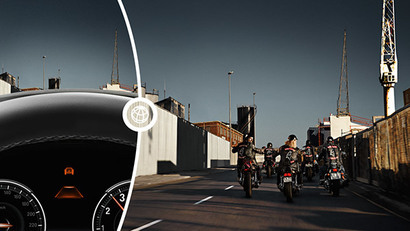Aktīvā kruīza kontole ar Apstāšanās&Braukšanas funkciju

Relaxed driving even in heavy traffic: Active Cruise Control with Stop&Go function keeps you at a constant distance from the vehicle ahead at all times. If the traffic comes to a halt, the system applies the brakes until the vehicle comes to a standstill and then automatically moves on as soon as the road is clear.
Active Cruise Control with Stop&Go function was primarily developed for journeys on motorways and major roads. Three radar sensors with a range of up to 150 metres permanently scan the carriageway in the direction of travel. When you approach a vehicle in front, the engine management and brakes adjust your speed so that the distance is automatically kept constant – and if necessary, the vehicle comes to a standstill.
When the lane ahead becomes clear or the vehicle in front speeds up, Active Cruise Control accelerates again until you reach your desired speed. To move off again after the vehicle has stopped, the driver has to give the command to accelerate manually, either by briefly pressing the accelerator or pressing a button. If the stop lasts from 1 to 3 seconds, the vehicle moves off automatically. Up to four cruising speeds can be pre-programmed and called up at the push of a button.
Active Cruise Control keeps your preferred speed constant within a range of 30 to 210 km/h and automatically adapts the following distance to the vehicle in front of you. The Stop&Go function even controls the speed when the car slows down to a standstill and restarts the engine automatically after a short interval, e.g. in a traffic jam.
On multilane carriageways, the system detects whether another vehicle is only driving in the adjacent lane. Furthermore, if you wish to resume full control of the vehicle at any time, all you have to do is briefly press the accelerator or brake in order to deactivate the system.
Active Cruise Control with Stop&Go function is not an autopilot. Consequently, if the vehicle ahead brakes harder than expected or if the system detects a critical situation, the driver receives acoustic and optical prompts to take action. Driving in heavy traffic thus becomes noticeably easier and tiring situations such as traffic jams become easier to master with greater concentration.